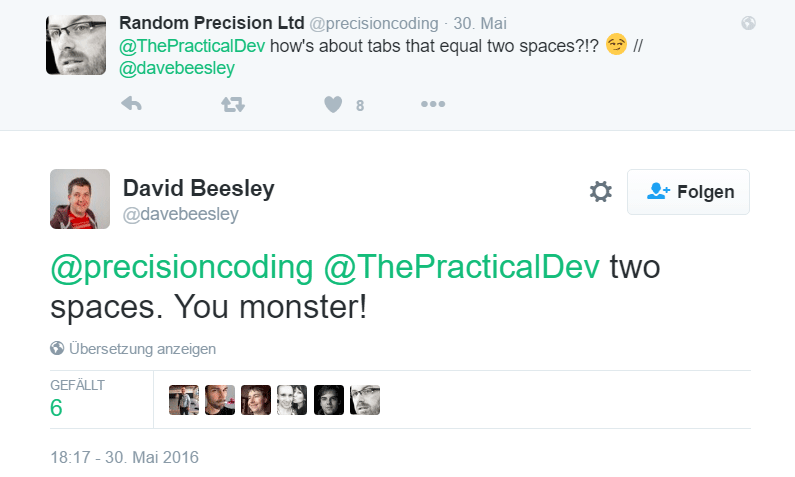Automate documentation with XProc and the GitHub Web API
for the Open Source framework transpect
ToC
Background
code documentation before transpect

code documentation before transpect
- just a few READMEs, Wiki pages existed
- some inline XSLT comments
- no common methodology or standards
how the code was organized
before transpect
- many repositories in our non-public SVN
- code was copied from project to project
- several languages for sticking XSLT pipelines together
Towards a modular architecture
Pipelining previously
- pipelines sticked together with Make, Ruby, Perl
- XSLT micropipelines
- depends on preinstalled tools and OS
Pipelining with XProc
- declarative vocabulary
- port connections
- interoperability
Encapsulation and modularity
- reusable steps with
p:declare-stepandp:import - Canonical import URIs
- XML Catalogs
Declaring canonical import URIs with XML Catalogs
<catalog xmlns="urn:oasis:names:tc:entity:xmlns:xml:catalog">
<rewriteURI uriStartString="http://transpect.io/docx2tex/"
rewritePrefix="../"/>
<nextCatalog catalog="../docx2hub/xmlcatalog/catalog.xml"/>
<nextCatalog catalog="../xproc-util/xmlcatalog/catalog.xml"/>
<nextCatalog catalog="../xslt-util/xmlcatalog/catalog.xml"/>
<nextCatalog catalog="../evolve-hub/xmlcatalog/catalog.xml"/>
<nextCatalog catalog="../mml2tex/xmlcatalog/catalog.xml"/>
<nextCatalog catalog="../xml2tex/xmlcatalog/catalog.xml"/>
</catalog>Import and use steps
<p:import href="http://transpect.io/xml2tex/xpl/xml2tex.xpl"/>
<xml2tex:convert name="xml2tex">
<p:input port="conf">
<p:pipe port="result" step="load-config"/>
</p:input>
<p:with-option name="table-model" select="$table-model"/>
<p:with-option name="table-grid" select="$table-grid"/>
<p:with-option name="debug" select="$debug"/>
<p:with-option name="debug-dir-uri" select="$debug-dir-uri"/>
<p:with-option name="status-dir-uri" select="$status-dir-uri"/>
<p:with-option name="fail-on-error" select="$fail-on-error"/>
</xml2tex:convert>We entitled it transpect and published it under a FreeBSD license.
Still just some guides and inline documentation existed, no standards.
Establishing standards
Coding style

more details here
Naming conventions
MyProject/
|--xmlcatalog/
| |--catalog.xml
|--moduleXY
|--css/
| |--myStylesheet.css
|--xpl/
| |--myPipeline.xpl
|--xsl/
| |--myXSLT.xslMoving to GitHub: The good parts
SVN is our favorite version control system, but …
… we wanted to lower the barriers for external users to use our code, file bug reports, make pull requests etc.
The Good, the Bad and GitHub
- GitHub downtimes (bad for our CI system)
- SVN adapter seems sometimes not to work properly
- Git submodules (Detached HEAD)
Implementation
XProc inline documentation
<?xml version="1.0" encoding="UTF-8"?>
<p:declare-step xmlns:p="http://www.w3.org/ns/xproc"
xmlns:c="http://www.w3.org/ns/xproc-step" version="1.0">
<p:documentation xmlns="http://www.w3.org/1999/xhtml">
The documentation may include
<a href="https://en.wikipedia.org/wiki/HTML">HTML</a>
markup as well.
</p:documentation>
<p:input port="source">
<p:inline>
<doc>Hello world!</doc>
</p:inline>
</p:input>
<p:output port="result"/>
<p:identity/>
</p:declare-step>Accessing the GitHub API
- XProc
p:http-requestand Calabash transparentJSON extension used to access the GitHub API - two pipelines: accessing the organization and recursively list folder and files in a repository
- XProc pipelines, XSLT stylesheets and XML catalogs are included as well
<?xml version="1.0" encoding="UTF-8"?>
<j:item xmlns:j="http://marklogic.com/json" type="object">
<j:language type="string">XProc</j:language>
<j:svn_005furl type="string">https://github.com/transpect/cascade</j:svn_005furl>
<j:forks type="number">0</j:forks>
<j:ssh_005furl type="string">git@github.com:transpect/cascade.git</j:ssh_005furl>
<j:full_005fname type="string">transpect/cascade</j:full_005fname>
<j:clone_005furl type="string">https://github.com/transpect/cascade.git</j:clone_005furl>
<j:default_005fbranch type="string">master</j:default_005fbranch>
<j:private type="boolean">false</j:private>
<j:open_005fissues_005fcount type="number">0</j:open_005fissues_005fcount>
<j:description type="string">Libraries to implement a transpect cascade configuration</j:description>
<j:git_005furl type="string">git://github.com/transpect/cascade.git</j:git_005furl>
<j:has_005fissues type="boolean">true</j:has_005fissues>
<j:contents_005furl type="string">https://api.github.com/repos/transpect/cascade/contents/{+path}</j:contents_005furl>
</j:item>Generating the documentation XML
- analyze XProc documentation tags, input and output ports, options, imports and generate DocBook
- XInclude is used to include this in the general DocBook documentation
HTML representation
- HTML template and MaterializeCSS framework
- DocBook converted to HTML and injected into the template
- Output HTML files are stored with XProc
Finally
commit HTML and XML (still manually) to update http://transpect.io
Outlook
Outlook
- writing documentation
- writing documentation
- writing documentation
Outlook
- Jenkins integration
- use inline documentation of input and output ports, options
- perhaps visualize XProc pipelines